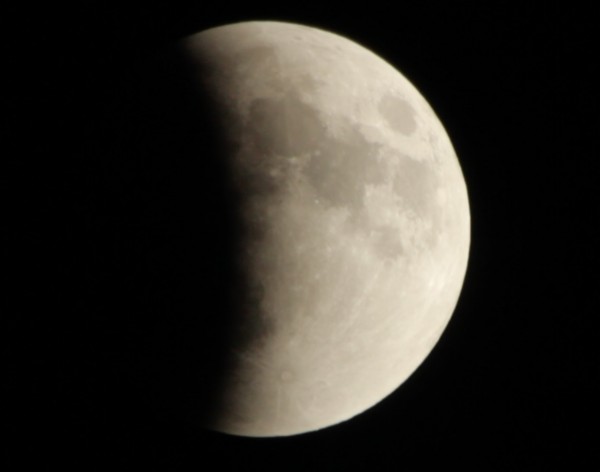
We haven’t seen a “supermoon” total lunar eclipse since 1982, and it won’t be until 2033 when we see another. There have only been five such eclipses in the last 100 years, which makes this “super blood moon” one of the rarest sights one can see.
It’s no surprise then that hundreds of people, including students, professors and townspeople gathered at the Smolen Observatory and surrounding fields to view the so-called “blood moon” on Sunday night, Sept. 27. Hundreds more gathered all over campus to view the historic sight.
Astronomers call it a supermoon it was closest to the Earth on Sept. 27 than any other date in 2015. The supermoon appears 14 percent bigger and 30 percent brighter than your average full moon due to its close proximity to the Earth.
A total lunar eclipse occurs when the Moon passes through the Earth’s umbral shadow and is completely blocked from the sun.
It was called the “blood moon” because of its reddish hue and the most prevalent question among the stargazers seemed to be “why is it red?”
Raj Pandya, director of the John R. Kirk Planetarium and astronomy professor at SUNY New Paltz explained this phenomenon at the observatory. He said as sunlight passes through our atmosphere, the short wavelengths, which appear blue are filtered out, which is what makes our sky blue during the day. However, long wavelengths are bent towards the Earth’s surface. They are then bent again as they are refracted towards the moon during a total lunar eclipse. When these wavelengths hit the moon, it gives off the orange-red hue.
Pandya said this also explains why the sun and moon appear red when they are nearing the horizon for a sunset or sunrise.
Other viewers wondered if the blood moon was safe to view, as solar eclipses are often unsafe to view without proper equipment.
“It doesn’t really do anything, it’s just nice to view, and it’s completely safe,” Pandya said. “Ancient people had all kinds of superstitions about the lunar eclipse, that it would have harmful effects, but thankfully we know now that isn’t the case.”
Apparently superstitions about the blood moon still exist. Preacher Pastor John Hagee of Cornerstone Church in San Antonio, Texas claimed “something dramatic will happen which will change the whole world” after the red moon emerged.
After the moon came and went, Hagee explained that the supermoon eclipse was merely a sign that the apocalypse will eventually happen at some point in human history. Quite a bold statement.
Meanwhile, back in New Paltz, spectators stared in awe at the orange moon, surrounded by countless stars. At around 11:40 p.m., just a few minutes before the estimated apex of the eclipse, heavy clouds slowly covered the red moon, making it completely disappear. Massive applause broke out as many of the observers seemed to think that this was the full lunar eclipse.
“The moon slowly faded out, and I think people thought that the moon had been swallowed by the shadow of the earth,” Pandya said.
After cloud cover ruined the red moon’s long-awaited reappearance, most of the spectators were ready to go. This was the last time New Paltz would see the super blood moon, at least for another 18 years.
